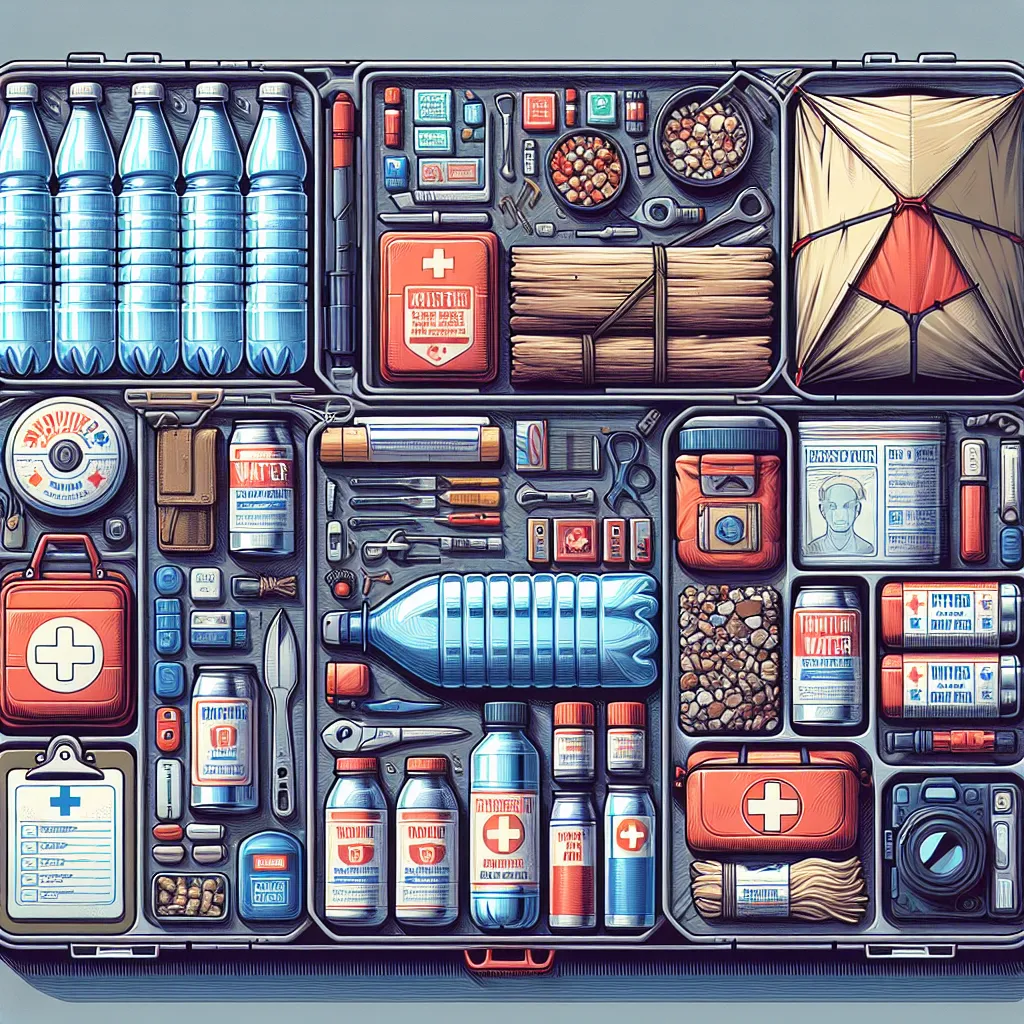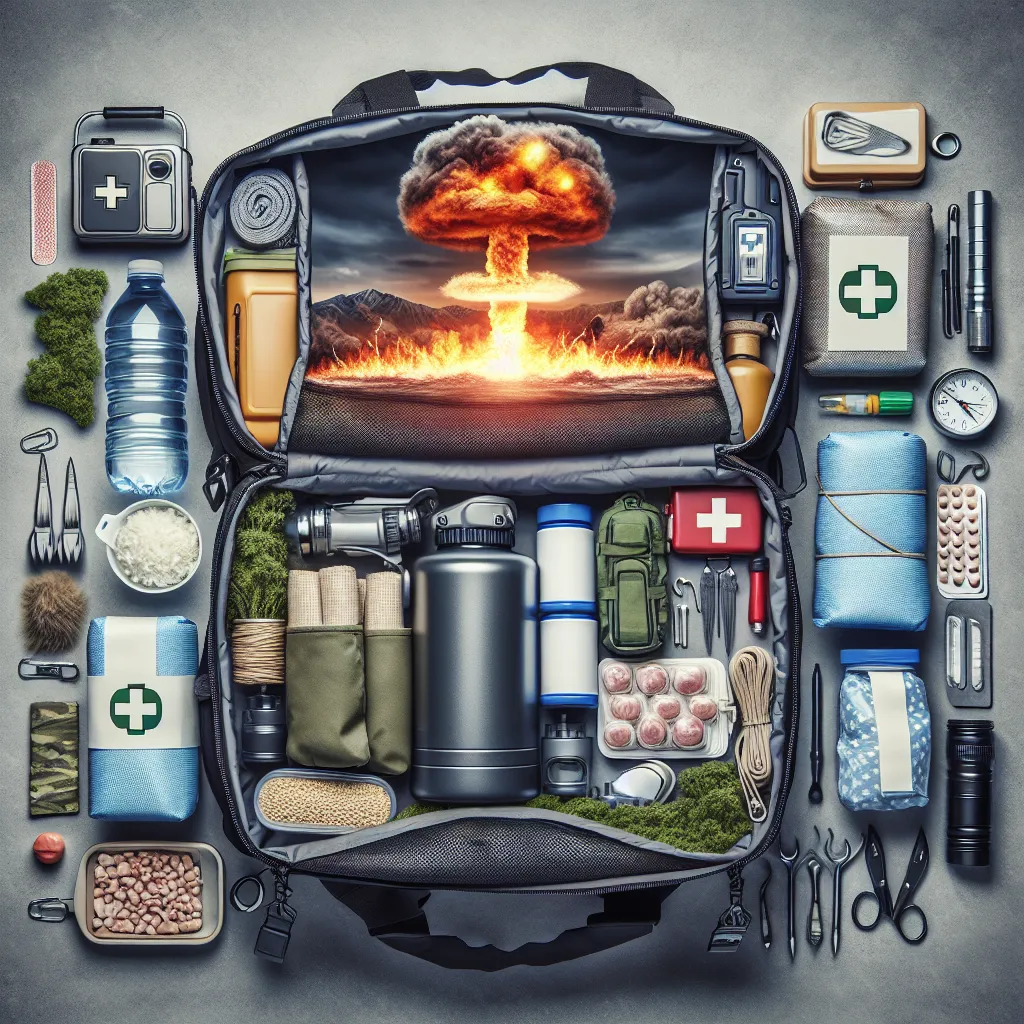The article highlights the top 10 essential household items that every home should have to ensure preparedness for everyday living and unexpected emergencies. From first aid kits and emergency food and water supply to tools, fire safety equipment, and communication devices, these items are crucial for the overall safety and well-being of household members. By emphasizing the significance of these must-have supplies, the article encourages readers to prioritize preparedness and ensure the readiness of their households for any situation. Whether it’s for DIY repairs, medical emergencies, or natural disasters, these essential items can make a significant difference in maintaining a functional and secure home environment.
The Essential Components of a Survival Kit
The article discusses the essentials of water and hydration in survival kits. It emphasizes the significance of clean water for maintaining hydration and includes tips on water procurement and purification, such as portable filtration systems and containers for storing water. Additionally, it recommends the inclusion of electrolyte packets to replenish essential minerals. The article highlights the importance of prioritizing water and hydration essentials in survival kits to better prepare individuals for unforeseen circumstances. It also covers the significance of food and nutrition supplies, emphasizing non-perishable, high-energy items, and the crucial role of shelter and protection components. Overall, it provides comprehensive insights into building well-rounded survival kits, making it a valuable read for those seeking practical preparedness advice.
The Science of Water Purification: Methods and Techniques
The article delves into the intricate process of water purification, shedding light on the pivotal role that filtration plays in eliminating impurities and contaminants from water. It discusses various filtration techniques including mechanical, biological, and chemical filtration, highlighting their efficacy in removing a broad spectrum of impurities, thus ensuring the safety and quality of drinking water. Additionally, the article emphasizes the advancements in filtration technology, such as membrane filtration and activated carbon filtration, as means of targeting specific contaminants and improving overall water quality. The subsequent section elucidates the critical role of chemical treatment methods, including chlorination, coagulation, flocculation, and disinfection with ozone or ultraviolet light, in eliminating harmful microorganisms and organic compounds from water. Lastly, the article underscores the significance of advanced purification techniques like nanofiltration, reverse osmosis, and UV disinfection in addressing the evolving challenges of water contamination, ultimately striving to provide safe drinking water for all.
Effective Strategies for Aid Distribution in Developing Countries
The article discusses the importance of implementing targeted aid programs to address specific needs in developing countries. It emphasizes the significance of tailoring aid programs to address unique challenges, such as access to clean water, healthcare services, and education. The article highlights the impact of collaborating with local community leaders and organizations to ensure cultural sensitivity and effectiveness. Furthermore, it stresses the importance of monitoring and evaluation processes to measure the impact and effectiveness of targeted aid programs. Additionally, the article explores the utilization of technology in aid distribution, including the use of mobile applications, biometric technology, and blockchain, to improve efficiency and transparency in delivering aid to those in need. The comprehensive approach and innovative solutions presented in the article make it a compelling read for anyone interested in effective aid distribution and improving the quality of life in developing countries.
Essential First Aid Skills for Everyday Emergencies
The article discusses the importance of basic first aid techniques for common injuries, emphasizing the significant impact of immediate care in mitigating injury and preventing further complications. It covers essential skills such as managing bleeding, treating burns, addressing sprains, and dealing with nosebleeds, providing practical guidance for each scenario. Furthermore, it highlights the essential first aid skills everyone should know, including CPR, controlling bleeding, recognizing signs of stroke or heart attack, and managing various injuries and medical emergencies. The article compellingly stresses the value of being prepared and empowered with necessary skills to create a safer environment for all.
The Significance of Water Purification in Ensuring Public Health
The article emphasizes the critical role of clean water in preventing waterborne diseases, highlighting the essential need for water purification to ensure public health. It discusses the detrimental impact of contaminated water, which can lead to the spread of diseases such as cholera, typhoid, and dysentery, particularly affecting vulnerable populations like children and the elderly. Furthermore, it underscores the importance of advanced water purification techniques, such as filtration, disinfection, and advanced oxidation processes, in eliminating contaminants and pathogens from water sources. The article highlights the advancements in water purification methods, including membrane filtration, UV disinfection, and AOPs, as pivotal in providing access to safe drinking water and promoting public health. It encourages readers to explore the comprehensive coverage of how advancements in water purification technologies can mitigate the risk of waterborne diseases and ensure the well-being of communities.
The Importance of Rations in Survival Situations
The article thoroughly delves into the critical role of rations in survival scenarios, emphasizing their significance in providing sustenance, stability, and effective resource management. It highlights how properly allocated rations contribute to both physical and mental well-being, underscoring their crucial role in maintaining strength and resilience in challenging environments. Furthermore, the piece underscores the importance of understanding essential nutrients for sustained survival and offers practical advice on prioritizing foods rich in proteins, carbohydrates, fats, and other vital elements. Additionally, it stresses the essentiality of ration planning for long-term survival, emphasizing the need for informed decisions about ration allocation and storage to optimize available resources. Overall, the article provides compelling insights and practical guidance, making it a must-read for anyone seeking to enhance their preparedness and survival skills in adverse situations.
10 Essential Items for Your Disaster Preparedness Kit
In the article “Water and Water Purification,” the importance of preparing for a disaster by including water and water purification supplies in an emergency kit is emphasized. Clean drinking water and safe water access are vital for survival, with suggestions for including several gallons of water per person, purification tablets or drops, portable water filters, and clean water storage containers. The section on “Non-Perishable Food Supplies” underscores the significance of including long-lasting food items such as canned goods, dried foods, and a manual can opener in a disaster preparedness kit, highlighting the essential nutrients and sustenance they provide when fresh food is unavailable. Lastly, in “Emergency Shelter and Warmth,” the article stresses the necessity of including items like a tent, thermal emergency blanket, and portable heat source, all crucial for providing emergency shelter and warmth during various emergency situations. The detailed and practical advice provided in the article encourages readers to thoroughly prepare for unforeseen emergencies by including these essential items in their disaster preparedness kits.
Key Steps to Creating an Effective Disaster Preparedness Plan
The article discusses the importance of understanding potential disasters and the essential components of a disaster preparedness plan. It emphasizes the significance of conducting a comprehensive risk assessment to identify natural and man-made threats and collaborating with local authorities and stakeholders. The article also highlights the key components of a successful disaster preparedness plan, including risk assessment, communication protocols, response procedures, business continuity planning, and regular training. Furthermore, it emphasizes the crucial steps of implementing and testing the plan to ensure its effectiveness during a crisis. Overall, the article provides valuable insights into creating a robust disaster preparedness plan, making it a must-read for organizations and communities looking to enhance their readiness and resilience.
Challenges and Opportunities in Delivering Effective Aid
The article “The Impact of Political Instability on Aid Effectiveness” delves into the challenges and far-reaching impacts of political instability on aid distribution. It highlights how instability hinders aid delivery, leads to corruption, and politicizes aid efforts, ultimately affecting the most vulnerable populations. Despite these challenges, the article outlines opportunities to improve aid effectiveness by addressing root causes of instability and adopting context-specific strategies. In conclusion, it emphasizes the profound impact of political instability on aid effectiveness and the potential for mitigating these challenges. The second article focuses on “Harnessing Technology for Efficient Aid Delivery,” emphasizing the opportunities presented by technology, such as mobile applications, remote sensing, blockchain, and artificial intelligence, in improving aid distribution. The article’s comprehensive approach and emphasis on addressing these pressing issues make it a compelling read for those interested in aid effectiveness and technological advancements in humanitarian efforts.









